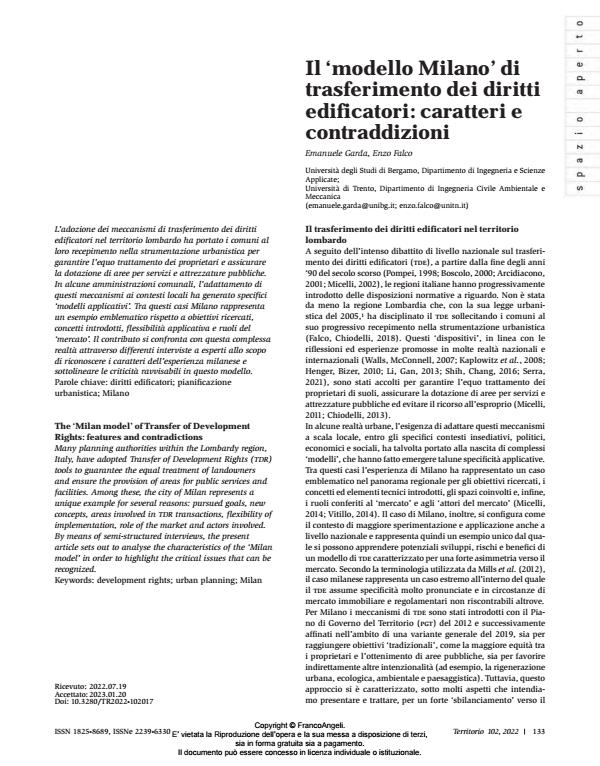The ‘Milan model’ of Transfer of Development Rights: features and contradictions
Journal title TERRITORIO
Author/s Emanuele Garda, Enzo Falco
Publishing Year 2023 Issue 2022/102
Language Italian Pages 8 P. 133-140 File size 159 KB
DOI 10.3280/TR2022-102017
DOI is like a bar code for intellectual property: to have more infomation
click here
Below, you can see the article first page
If you want to buy this article in PDF format, you can do it, following the instructions to buy download credits

FrancoAngeli is member of Publishers International Linking Association, Inc (PILA), a not-for-profit association which run the CrossRef service enabling links to and from online scholarly content.
Many planning authorities within the Lombardy region, Italy, have adopted Transfer of Development Rights (TDR) tools to guarantee the equal treatment of landowners and ensure the provision of areas for public services and facilities. Among these, the city of Milan represents a unique example for several reasons: pursued goals, new concepts, areas involved in TDR transactions, flexibility of implementation, role of the market and actors involved. By means of semi-structured interviews, the present article sets out to analyse the characteristics of the ‘Milan model’ in order to highlight the critical issues that can be recognized.
Keywords: development rights; urban planning; Milan
Emanuele Garda, Enzo Falco, Il "modello Milano" di trasferimento dei diritti edificatori: caratteri e contraddizioni in "TERRITORIO" 102/2022, pp 133-140, DOI: 10.3280/TR2022-102017